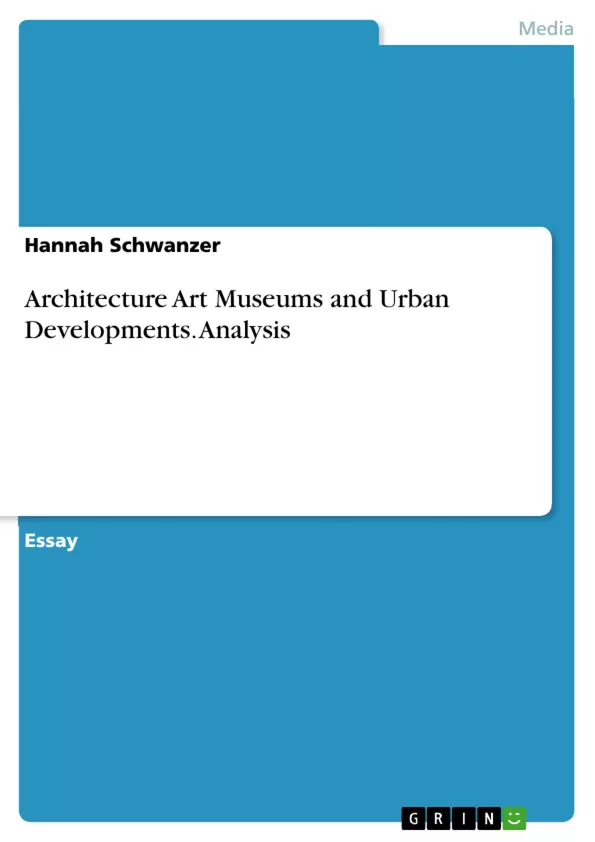Museums became “cultural cornerstones of urban revitalization, tourism efforts and catalysts for increased business and development endeavors”.
Great architecture as part of the museums corporate culture leads to the economic interest of business developments, which are likely to include museums to enhance activities, and to enrich the individual environment. Many discussions and surveys, as well as realized projects show that business developments are likely to become more effective when integrating cultural activities into their concepts.
But architecture and construction cannot be financed by the museum alone. Partnerships and the symbiosis with businesses, local governments, and professional developers has achieved major importance since the early 1990 s, and culminated in the last five years.
This paper is part of my master thesis (2001) “The Commercial Aspect of NPOs. The Restrucuring Effort of the The MAK-Austrian Museum of Applied Arts Vienna”. I dedicated this chapter to evolve my theory about the mutual benefit of the arts and architecture for the economy.
Inhaltsverzeichnis (Table of Contents)
- ARCHITECTURE, ART MUSEUMS AND URBAN DEVELOPMENTS - ANALYSIS
- The Public Art Museum in the Late 20th Century
- The Guggenheim Collection
- Museums and Urban Development
- Bilbao: A Case Study in Museum-led Urban Renewal
- The Guggenheim on the East River
- Other Examples of Museum-led Urban Development
Zielsetzung und Themenschwerpunkte (Objectives and Key Themes)
This text explores the evolution of the art museum in the late 20th century, focusing on its role in urban development and its transformation from a traditional institution into a commercial and economic force. It examines how museums are using architecture, marketing, and partnerships to achieve urban revitalization and promote tourism.
- The changing role of art museums in society
- The impact of architecture on museum identity and public perception
- The relationship between art museums and urban development
- The use of museums as catalysts for economic growth and tourism
- The partnerships and financial strategies employed by museums in urban projects
Zusammenfassung der Kapitel (Chapter Summaries)
- The text begins by outlining the shifting perception of the art museum in the late 20th century, emphasizing its move away from a purely aesthetic focus towards a more commercially-driven model.
- It then analyzes the Guggenheim Collection as a paradigm for this change, highlighting the impact of Frank Lloyd Wright's architectural design on the museum's identity and public image.
- The text subsequently explores the growing symbiosis between art museums and urban development, noting the rise of museums as "cultural cornerstones" and drivers of economic growth.
- The Guggenheim Museum-Bilbao is presented as a case study in this phenomenon, illustrating how a landmark museum can transform a city's image and attract investment.
- The text concludes with an examination of other examples of museum-led urban development projects, including the proposed Guggenheim on the East River in New York City.
Schlüsselwörter (Keywords)
The core concepts of this work include the evolution of the art museum, urban development, architectural design, corporate image, tourism, economic growth, public-private partnerships, and the role of institutions in shaping public perception.
- Quote paper
- Mag. Art., MBA Hannah Schwanzer (Author), 2001, Architecture Art Museums and Urban Developments. Analysis, Munich, GRIN Verlag, https://www.hausarbeiten.de/document/70118


